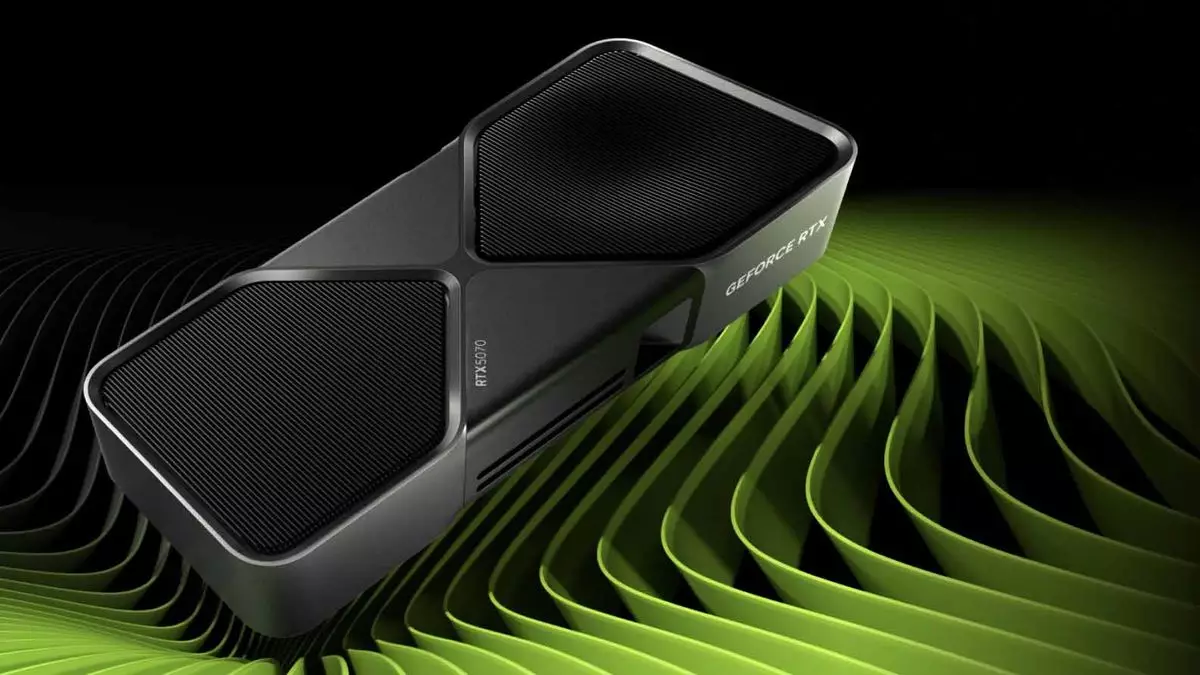The recently unveiled Nvidia GeForce RTX 5070 at CES 2025 has set the tech community abuzz with excitement and skepticism alike. Positioned as the entry-level member of Nvidia’s 50-series graphic processors, the RTX 5070 is expected to provide substantial performance at a competitive price point. While Nvidia’s claims of offering RTX 4090 performance at a significantly lower price of $549 seem enticing, the reality of its performance is nuanced and dependent on various factors. As we sift through the details, a comprehensive understanding of what the RTX 5070 truly offers becomes essential.
Early impressions from tech journalists, particularly those from PCGamesN, suggest that the RTX 5070’s performance is indeed remarkable, as shown in their tests of the game “Marvel Rivals.” The findings revealed that the RTX 5070 not only approached the capabilities of the RTX 4090 but actually surpassed it, delivering a striking 240 frames per second (fps) compared to the RTX 4090’s average of 180 fps. This data seems compelling and raises the question: how did Nvidia manage to achieve such a significant leap in performance?
The key to this performance surge lies in Nvidia’s latest technology: the new Tensor cores and the innovative DLSS 4 Multi Frame Generation. These advanced features allow for the generation of additional frames, thereby enhancing the perceived performance of the GPU considerably. As the market moves increasingly towards AI-assisted graphics processing, Nvidia’s approach seems to resonate with a future where traditional rendering is complemented—or in some cases, replaced—by AI-driven solutions.
DLSS 4 represents a monumental shift in how graphics rendering might be conducted in the future. Using sophisticated algorithms, this technology can generate up to three interpolated frames between each original frame rendered by the GPU. It raises the bar significantly for graphical fidelity and performance. As long-time Nvidia CEO Jen-Hsun Huang eloquently articulated, the incorporation of artificial intelligence into graphics processing is not merely beneficial; it is becoming essential.
However, it is worth noting that the performance boosts observed are largely dependent on the gaming titles being played. While Marvel Rivals was highlighted for its optimization for the RTX 5070, the question remains how well this GPU will perform across a broader suite of games. Early reports indicate that the significant performance gap diminishes when tested with less optimized titles. Thus, while DLSS 4 provides a thrilling glimpse into the potential of modern graphics cards, the overall versatility of the 5070 may not match that of its more expensive predecessor.
Another crucial factor to consider is the lack of detailed information regarding the configurations used for the performance comparisons. Without knowing specifics, such as the CPUs employed or other hardware elements, it is challenging to fully validate the aforementioned performance claims. The RTX 4090 has been a staple in high-performance gaming, and while it may struggle to keep pace with the RTX 5070 when DLSS 4 is in play, the comparison is not without its limitations.
Moreover, Nvidia itself acknowledges that the performance assessments are somewhat of an exception rather than the norm. Different gaming environments and demands may lead to varying results that could potentially lessen the appeal of the RTX 5070’s touted capabilities. Therefore, users should approach the RTX 5070 with tempered enthusiasm, recognizing both its impressive feats and its potential shortcomings.
The Nvidia GeForce RTX 5070 appears to usher in a new era in gaming performance, blending affordability with advanced technology. This case study sparks a conversation about the graphics industry’s trajectory, where artificial intelligence plays an integral role in shaping enhanced gaming experiences. However, as gamers and tech enthusiasts await its official release this February, it remains essential to keep a critical eye on the actual performance outcomes across diverse gaming environments. While it may herald a step towards making high-performance gaming more accessible, only time will tell if the RTX 5070 can live up to expectations without the crutches of optimizing frameworks like DLSS 4.

